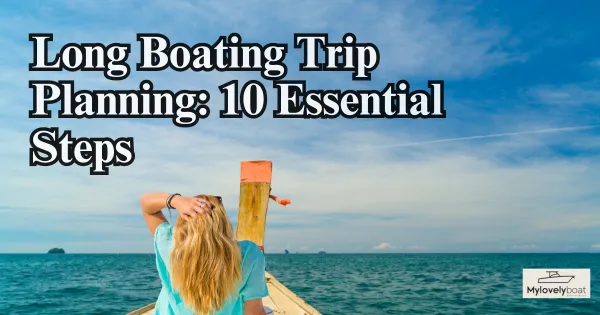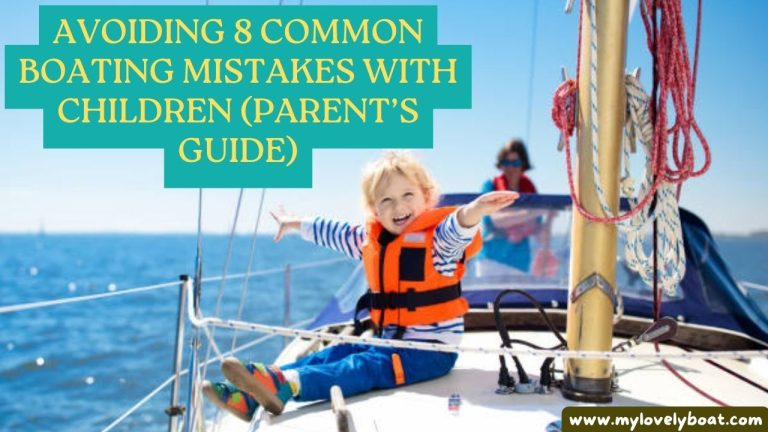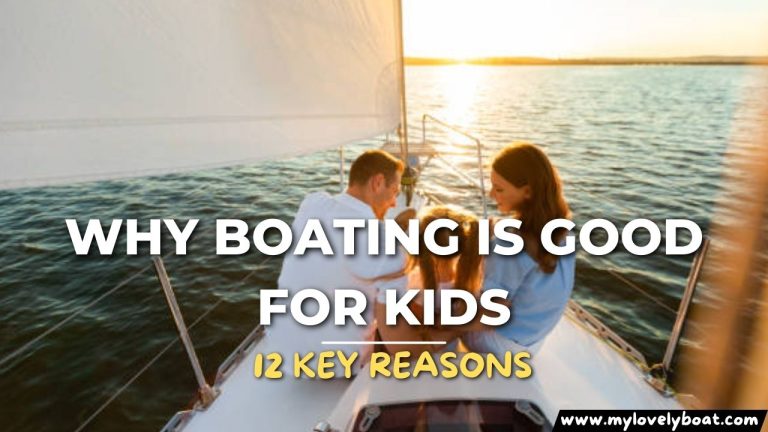
Planning a long boating trip can feel like a thrilling adventure, but it also requires careful preparation and organization.
Whether you’re setting sail for a weekend getaway or an extended journey across beautiful waters, having a solid plan in place will ensure a smooth and enjoyable experience. Let’s dive into ten expert tips to help you plan and organize your next long boating trip.
These simple steps will help make sure that a long boating trip is a winner.
Here Is a List of 10 Steps to Prepare for A Long Boating Adventure
1# – Choose Your Destination
Selecting the right location is crucial when planning a boating trip. Begin by exploring various waterways, such as serene lakes, meandering rivers, or the vast expanse of the ocean.
Each offers a unique boating experience. Thoroughly research any restrictions or specific rules that apply to your chosen destination, such as speed limits or areas off-limits to boaters.
Confirm that your boat type suits the water conditions, and familiarize yourself with the local amenities and docking locations.
2# – Check the Weather
Weather can make or break your boating trip. Consult multiple weather sources for forecasts, paying close attention to winds, which can affect waves and your boat’s handling.
Be vigilant about the chances of precipitation, storms, and changing temperature conditions that could impact your comfort and safety. A clear, calm forecast is ideal but always have a backup plan.
If the weather looks to take a turn for the worse, be flexible and ready to postpone to guarantee a safe and pleasant experience.
3# – Inspect Your Boat
A thorough boat inspection is imperative for a successful outing. Check your boat’s mechanical systems, including the engine and fuel system, to ensure everything functions optimally.
Electrical systems must be reliable, especially lighting and navigation equipment. Safety gear is non-negotiable.
Inspect life jackets for each person aboard, ensuring they fit correctly, and confirm that fire extinguishers, flares, and other safety equipment are accessible and in good condition. This step is vital for preventing issues while away from shore.
4# – Plan Your Route
Precise route planning is essential for a successful boating trip. Start by charting a path that accounts for the places you intend to visit and the time you’ll spend at each spot.
Consider the distance and fuel requirements to ensure your journey is feasible. For safety reasons, communicate your itinerary to a friend or family member, including departure and expected return times.
This not only aids in emergencies but also provides peace of mind for those on land.
5# – Gather Necessary Supplies
Preparation is vital to an enjoyable and safe boating experience, starting with packing essential supplies.
Ensure you have an ample supply of fresh water and a variety of non-perishable food items to last the entire trip, plus some extra in case of unexpected delays. Sun protection is crucial, so include sunscreen, wide-brimmed hats, and UV-blocking sunglasses.
A well-stocked first-aid kit is also vital, equipped to handle minor injuries or illnesses until you can get professional medical help.
6# – Learn and Follow Boating Rules
Understanding and complying with local boating laws and regulations is non-negotiable for every boater.
This includes familiarizing yourself with the waterway’s specific rules, such as speed limits and designated areas for recreational activities. Knowing the right-of-way rules is crucial to safe navigation and helps prevent collisions.
Signal your intentions to other boaters using proper signaling methods, ensuring clear communication on the water. Adherence to these guidelines promotes safety and respect among the boating community.
7# – Consider Your Ideal Boating Activities
Decide on the activities you wish to enjoy, such as fishing, water skiing, or cruising. Each activity may require different gear and preparation.
Factor in these preferences when choosing your destination and ensure the location supports your interests. Planning around your ideal activities will maximize your enjoyment and ensure you’re fully equipped for the experiences you envision.
This tailored approach paves the way for a boating trip perfectly aligning with your expectations and hobbies.
8# – Check for Required Permits and Licenses
Before launching, verify whether you plan to boat in an area that requires specific permits or licenses. These can vary depending on the region and type of watercraft.
Ensure that all necessary paperwork is in order and accessible on your trip. Depending on jurisdiction and boat size, this might include fishing licenses, boat registration, and captain’s licenses.
Doing this helps you avoid fines and ensures your trip is legally compliant, allowing you to enjoy your boating adventure uninterrupted.
9# – Book Your Boat Ahead of Time
If you’re not using your vessel, securing a rental boat well in advance is crucial, especially during peak season.
This guarantees that your preferred boat type and size are available for your trip dates. Choose a vessel that matches your planned activities and comfort needs, and ensure you understand its features and operation before departure.
Booking early often provides a broader selection and can even lead to better rates, making your trip enjoyable and cost-effective.
10# – Pack Extra Food, Water, Clothing, and Safety Materials
Packing additional provisions can save the day in case of unexpected circumstances or delays.
Bring extra non-perishable food and water beyond your estimated needs as a safety margin. Include additional layers of clothing to be prepared for changing weather, remembering that it can be more relaxed on the water.
Double-check that you have ample safety gear, including life jackets, signaling devices, and a well-stocked first-aid kit. Extra supplies contribute to a safe and comfortable journey on the water.
Conclusion: Set Sail with Confidence
Planning and organizing a long boating trip requires careful consideration and preparation, but with these expert tips, you can ensure a safe and enjoyable adventure on the water.
From assessing your cruising capabilities to monitoring weather conditions, each step is vital to your success.
So gather your crew, chart your course, and get ready to set sail on an unforgettable journey. Happy boating
FAQ
What should I include in my float plan?
Your float plan should include your route, stops, expected return date, and emergency contacts. Share this with a friend or family member.
How do I check my boat’s condition before a trip?
Conduct a thorough inspection of the engine, navigation systems, and safety equipment. Address any maintenance issues and ensure everything is in working order.
What are some essential supplies for a long boating trip?
Pack enough food, water, medical supplies, weather-appropriate clothing, navigation charts, and emergency gear like flares and a first-aid kit.
How can I stay connected during a long boating trip?
Bring communication devices like a VHF radio and a satellite phone. Check in regularly with someone on land and update them on your progress.
How do I plan stops on my boating route?
Identify safe harbors and marinas along your route. Plan for overnight stops and rest days to avoid fatigue and ensure safety.





